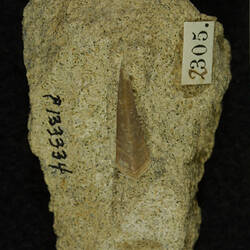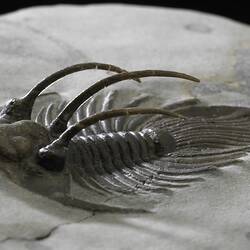Invertebrate Palaeontology
Palaeontology was part of the original collections which formed the Museum of Natural History (predecessor to Museums Victoria) in 1854 under William Blandowski. The collection has since been enormously expanded by donation, purchase, field surveys and assimilation of other institutional collections in Victoria.
The Invertebrate Palaeontology Collection today includes representatives of all animal phyla known from the fossil record (excluding Vertebrates and Protista, which are part of the Vertebrate Palaeontology Collection), and spans their development over 630 million years of Earth history. The collection, together with that of Vertebrate Palaeontology and Palaeobotany, is one of the three largest fossil collections in Australia. The major collections within the invertebrate palaeontology collection are the taxonomic collection (including the type and figured collection), the graptolite collection and the stratigraphic collection. The taxonomic collection numbers over 500,000 specimens, of which about 18,000 are type and figured specimens that have been documented in scientific publications. The stratigraphic collection (unsorted bulk material arranged by geological time) is estimated to be in excess of 3.5 million specimens, mostly from localities across south-eastern Australia.
Significance
The Invertebrate Palaeontology Taxonomic Collection is significant not only because of its size but also because of its comprehensive coverage of many groups of invertebrate fossils from south-eastern Australia. The collection of Tertiary fossils is unsurpassed by any other Australian institution and the collection of overseas fossils is also considered one of the finest in the country. The graptolite collection is the largest and most diverse in Australia and is of international significance in dating and correlating Ordovician rocks in Victoria with others around the world.
The collection documents the diversity and evolution of marine and, to a lesser extent, freshwater and terrestrial animals, from both spatial and temporal perspectives. The 'deep time' component of the collection allows it to inform about events ranging over millions of years, enabling research into past ecosystem changes and biotic responses over time, particularly in southern Australia.




